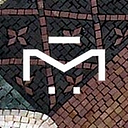From Abstract to Surrealism…Art styles that will beautify your walls
(4 min read) Art is a form of self-expression and a way to convey emotions, ideas, and life experiences. There are so many different art styles because artists have various ways of saying how they feel, how they see the world, and what they’re going through.
As an art enthusiast, you’ve probably come across various terms, like the product search filters on our website. But, really, what’s the difference between Art Deco and Art Nouveau? Expressionism and Impressionism? What makes Pop Art, well, pop?
In this glossary, we’ll look at different art styles and learn what they really mean. We hope our short guide makes it easier to look for the right mosaic design for your space.
Abstraction or abstract art is a broad term covering many styles and movements. The Tate UK defines abstract art as “art that does not attempt to represent an accurate depiction of a visual reality.” Real-life or figurative art is simplified into an array of shapes, colors, and forms.
Famous abstract artists: Vasily Kandinsky, Piet Mondrian, Mark Rothko
Art Deco was a glamorous art movement from the 1920s to the 1930s. It was often associated with design, architecture, and decorative arts. It traced its origins to a 1925 Paris exhibition of “Arts Decoratifs.” In its heyday, Art Deco was sleek, modern, geometric, streamlined, yet opulent.
Famous Art Deco artists: Hildreth Meiere, Tamara de Lempicka, René Lalique
Art Nouveau, or “New Art,” was an earlier style that dates to the 1880s until World War I. The art movement was known for using curved, flowing lines inspired by nature. Some of the finest examples of Art Nouveau can be found in architecture, design, and illustration.
Famous Art Nouveau artists: Henri de Toulouse-Lautrec, Antonio Gaudi, Gustav Klimt
In the early 20th century, Pablo Picasso and Georges Braque pioneered Cubism, a style initially ridiculed for consisting of “little cubes.” But there is more to Cubism than geometric planes. When you look at a Cubist painting, the subject is broken down into shapes and rendered in multiple angles. According to the Museum of Modern Art, the Cubists “abstracted from real life.” Still, they would include small, identifiable forms-like a man going down a flight of stairs, for example.
Famous Cubists: Pablo Picasso, Georges Braque, and Fernand Léger
Expressionist art and architecture flourished between 1905 and 1920, notably in Germany. Influenced by painters such as Edvard Munch and Vincent van Gogh, the Expressionists exaggerated and distorted lines and colors in their work for meaning and emotional impact.
Famous Expressionists: Egon Schiele, Oskar Kokoschka, Ernst Ludwig Kirchner
There is no one definition of folk art. Generally, it is an expression of traditional culture. Folk art is rooted in a community’s tradition, showcasing the artist or artisan’s cultural identity. Folk artists typically learn their skills through informal apprenticeships, although they may also be self-taught or formally educated.
Famous folk artists: Grandma Moses, Maud Lewis, George Smart
One of the most widely recognized styles in our glossary, Impressionism, was a French art style that emerged in the mid-to-late 19th century. The term was borne out of a scathing review of a group exhibit in 1874, where an art critic “poked fun at Monet’s painting, Impression, Sunrise.” Impressionist works are distinguished by small, visible brush strokes, unblended colors, and a truthful depiction of natural sunlight.
Famous Impressionists: Claude Monet, Édouard Manet, Edgar Degas
Pop art was a British and American art movement from the 1950s to the 1970s. It’s called “pop art” because its artists explored imagery from popular culture. Prominent names like Andy Warhol and Roy Lichtenstein applied commercial techniques and materials, such as screen-printing, in producing fine art.
Famous Pop artists: Andy Warhol, Roy Lichtenstein, Tom Wesselmann
Surrealism was not only an art style. It was a literary, intellectual, and artistic movement borne out of a 1924 manifesto by the French poet Andre Breton. The creative movement was heavily inspired by the work of psychologists Sigmund Freud and Carl Jung. Its visual artists attempted to tap into the “superior reality” of the subconscious mind. As a result, surrealist art is like something out of a dream, with hyper-realistic subjects put together in strange ways.
Famous Surrealists: Salvador Dalí, Rene Magritte, Joan Miró
